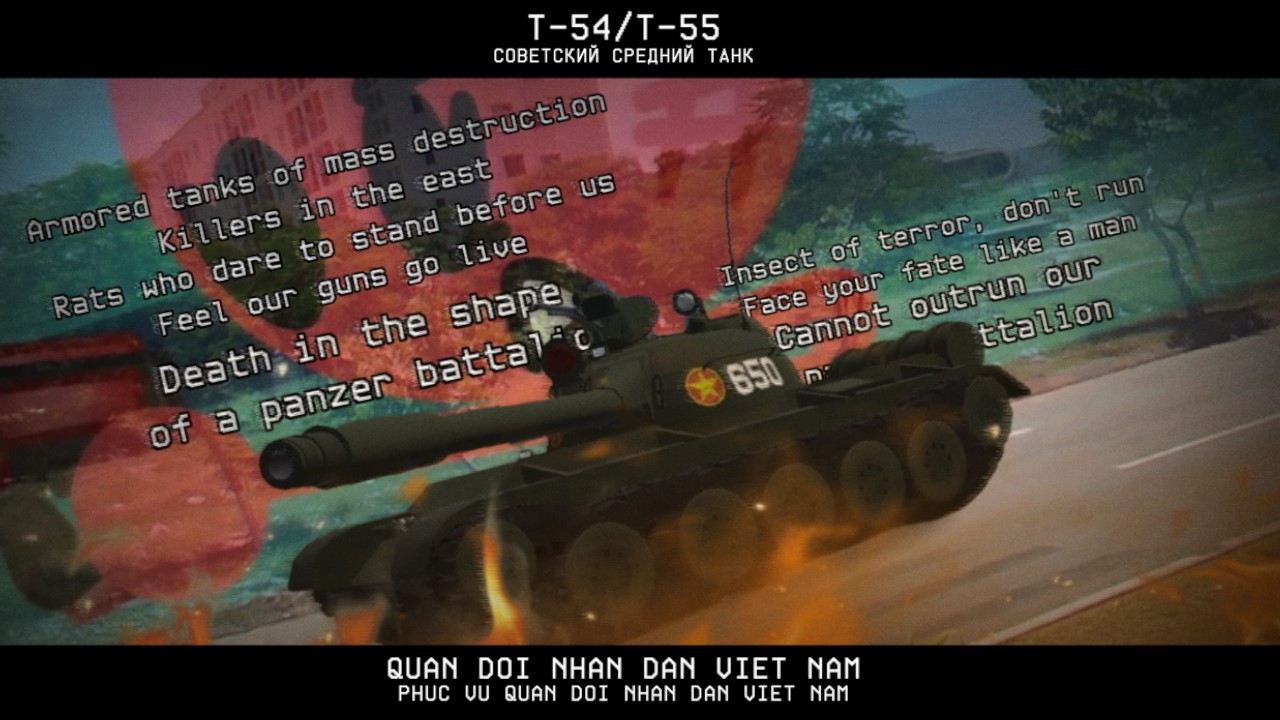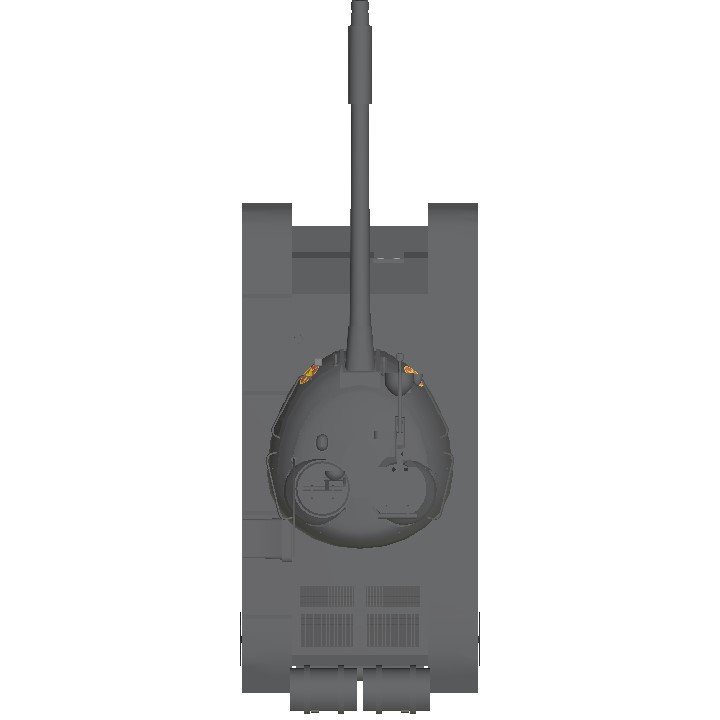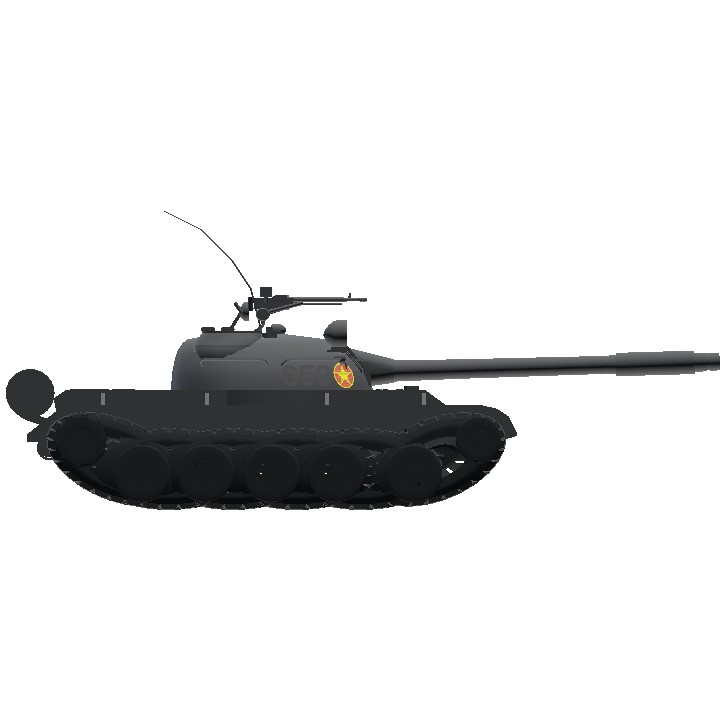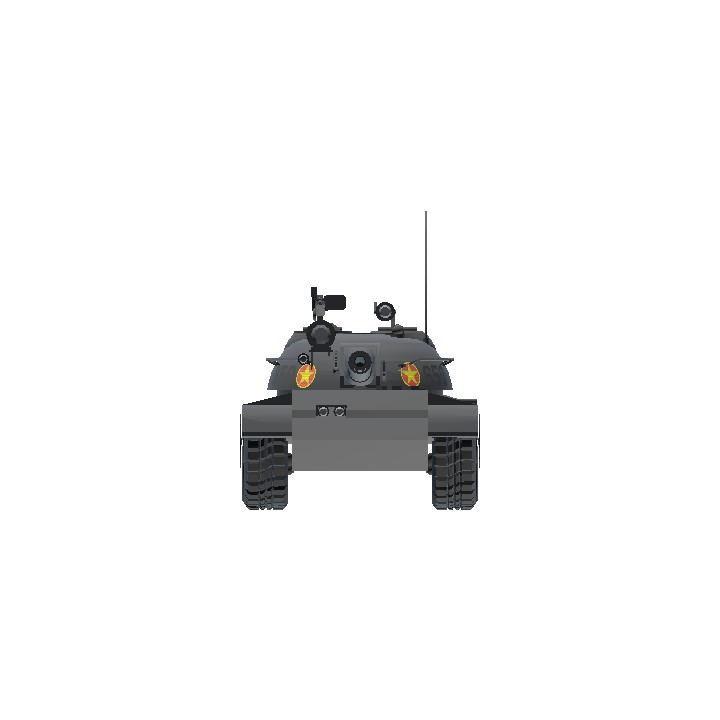So, what if you turned foury's...
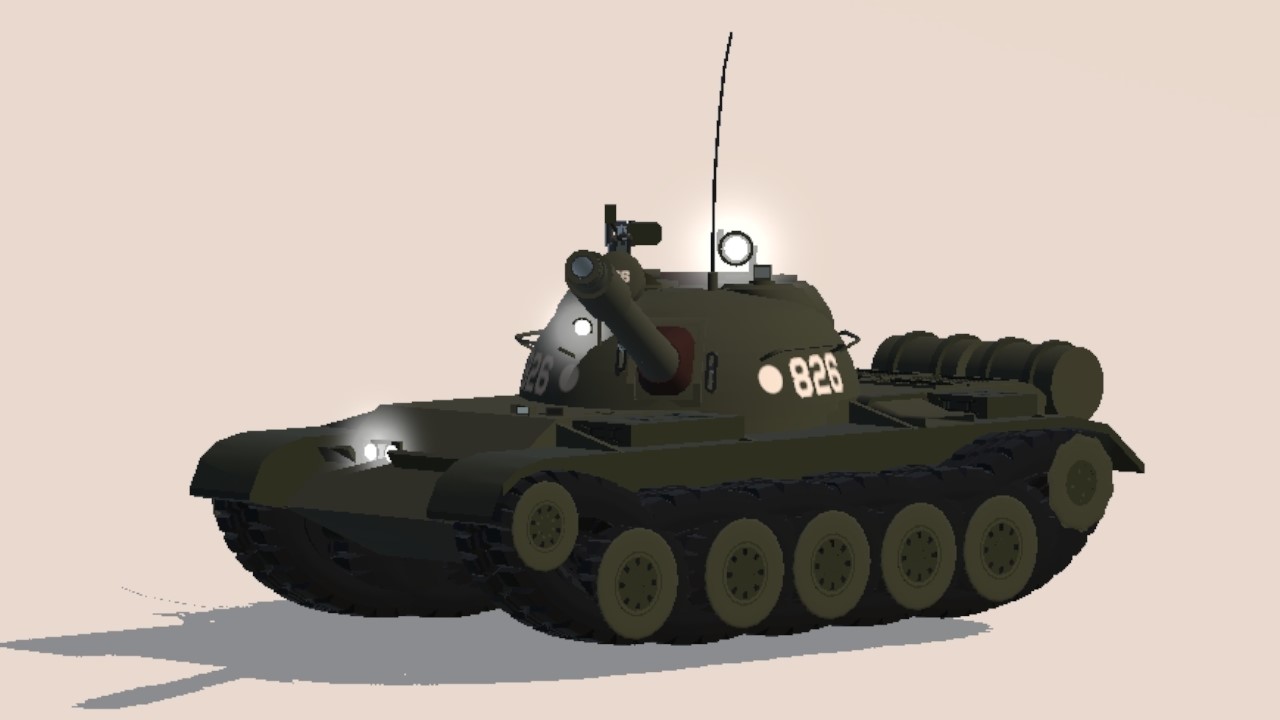
...into a People's Army of Vietnam's tank?
Changes to this tank as follows:
- Small paint changes to the tank
- Changed the label's number from "826" to "650"
- Replaced the "•" with the People's Army of Vietnam's military vehicle roundel
- Small changes to the tank's turret
The T-54 and T-55 tanks are a series of Soviet medium tanks introduced in the years following the Second World War. The first T-54 prototype was completed at Nizhny Tagil by the end of 1945. From the late 1950s, the T-54 eventually became the main tank for armoured units of the Soviet Army, armies of the Warsaw Pact countries, and many others. T-54s and T-55s have been involved in many of the world's armed conflicts since their introduction in the second half of the 20th century.

A T-55 tank on display at the Imperial War Museum
The T-54/55 series is the most-produced tank in history. Estimated production numbers for the series range from 96,500 to 100,000. They were replaced by the T-62, T-64, T-72, T-80 and T-90 tanks in the Soviet and Russian armies, but remain in use by up to 50 other armies worldwide, some having received sophisticated retrofitting. The Chinese version of the T-54A is the Type 59.
During the Cold War, Soviet tanks never directly faced their NATO adversaries in European combat. However, the T-54/55's first appearance in the West around the period of the 1950s (then the beginning of the Cold War) spurred the United Kingdom to develop a new tank gun, the Royal Ordnance L7, and the United States to create the M60 tank.
Service history - Vietnam War

An LASV-colored T-54 tank on display in the Vietnam Military History Museum in Hanoi.
During the Vietnam War, the People's Army of Vietnam (PAVN) and its proxy military force, the Liberation Army of South Vietnam (LASV), used T-54s, along with its Chinese-built copy (the Type 59), extensively against the South Vietnamese Army of the Republic of Vietnam (ARVN) and their allied US forces.
The PAVN/LASV and the ARVN engaged each other with tanks for the first time during Operation Lam Son 719 in February 1971. During that battle, 17 M41 Walker Bulldog light tanks of the ARVN's 1st Armoured Brigade claimed to have destroyed 22 PAVN tanks, a total of 6 T-54s and 16 PT-76 light amphibious tanks, at no loss to themselves, but their friendly units lost 5 M41s and 25 armoured personnel carriers (APCs), mainly M113 APCs.
On Easter Sunday, 2 April 1972, the newly activated ARVN 20th Tank Regiment, comprising approximately 57 M48A3 Patton main battle tanks (note that ARVN regiments were equivalent to US battalions, and ARVN squadrons were comparable to US companies or troops) received reports from friendly intelligence units of a large PAVN armoured column moving towards Dong Ha, the largest South Vietnamese city near the Vietnamese DMZ located on the 17th Parallel. At about noontime, the tank crewmen of the ARVN's 1st Squadron observed enemy armour moving south along Highway 1 towards Dong Ha and promptly concealed their tanks on high ground with a good vantage point against their enemy. Waiting for the PAVN tank column to close to between 2500 and 3000 meters, the 90mm main guns of the Patton tanks opened fire and quickly destroyed nine PT-76s and two T-54s. The surviving PAVN armour, unable to locate their enemy's positions, hastily turned about and withdrew shortly afterwards.
On 9 April 1972, all three squadrons of the 20th Tank Regiment (57 M48 tanks) fought hard against enemy armour, firing upon PAVN tanks accompanied by large masses of infantry, again while occupying the strategically important high ground. This time, similarly, the Pattons opened fire at approximately 2800 meters. A few answering shots from the T-54s fell short and the PAVN tanks began to scatter after suffering considerable losses and heavy casualties. By the end of the day, the 20th claimed to destroy sixteen T-54s and captured one Type 59 at no loss to themselves.(The PAVN confirmed six tanks were damaged) On 27 April, heralded by massive artillery attacks, a new PAVN offensive began against ARVN positions. The barrage was quickly followed by violent attacks by PAVN infantry and a T-54 tank. By 2 May, the 20th Tank Regiment had lost all of their tanks to enemy fire. During the first month of the First Battle of Quang Tri, all ARVN M48 Pattons (100 tanks) were lost.
PAVN armoured units equipped with the T-54 tank achieved one of their largest victories in April 1972 when the PAVN 203rd Armoured Regiment attacked the ARVN's 22nd Infantry Division based at Tan Canh Base Camp, which dominated a main route into the city of Kon Tum, located near the 17th Parallel. After a two-day-long intense artillery barrage, eighteen T-54 tanks attacked the camp at dawn from two different directions, thus breaking apart the ARVN unit into two and splitting up its forces, which quickly abandoned its positions and withdrew. T-54 tank No. 377 had managed to destroy seven ARVN M41s before it was finally destroyed by M72 LAW anti-tank rocket launchers fielded by the South Vietnamese infantry. The PAVN destroyed 18 M41 light tanks with 31 M113 APCs and captured 17 M41s intact while losing only two T-54 tanks and one PT-76 tank in the armoured skirmish.
At the very end of the war on 30 April 1975, a PAVN T-54 smashed through the main gate of the RVN Presidential Palace in the capital city of Saigon, accompanied by onrushing North Vietnamese troops after North Vietnam conquered the South. This widely seen image has come to be regarded by many as perhaps the defining moment of the end of the bloody 20-year-long conflict in Vietnam and the fall of the Republic of Vietnam. During the war, PAVN tank units were involved in 211 battles, claimed 20,000+ enemy killed, destroyed more than 2,000 enemy tanks/APCs, 870 other military vehicles, and 3,500 enemy bunkers, and shot down 35 aircraft or helicopters, overwhelmingly using T-54s. The PAVN lost an estimated 250 (1972 - 150, 1973-1975 - 100) T-54s during the war.
Following the Vietnam War, Vietnam's T-54/55s and Type 59s continued to see much combat activity against neighbouring Cambodia and China to their north between 1978 and 1979. Just like many developing countries around the world which continue to operate the T-54/55, at least 900 T-54s, along with a similar number of T-55s and Type 59s, are still in active military service with the Socialist Republic of Vietnam until the present day. Some of them are slated to be replaced by the more modern T-90S/SK.
Notes
- This tank is based on this livery, as seen below on this image.
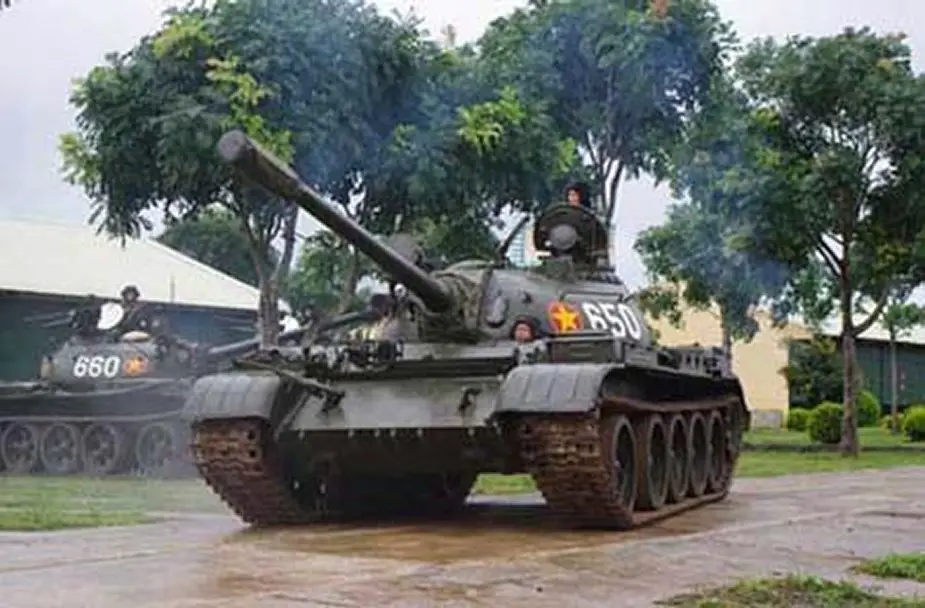
Vietnamese T-55s. - On the background, there's a lyric from Sabaton's song, Panzer Battalion.

They're fighting! (Credit: ShiningSwarm25 on YouTube) - Click here to see the original livery of this tank.
Specifications
General Characteristics
- Predecessor T-55
- Created On Android
- Wingspan 10.2ft (3.1m)
- Length 30.2ft (9.2m)
- Height 12.5ft (3.8m)
- Empty Weight 14,371lbs (6,518kg)
- Loaded Weight 15,424lbs (6,996kg)
Performance
- Wing Loading N/A
- Wing Area 0.0ft2 (0.0m2)
- Drag Points 5595
Parts
- Number of Parts 439
- Control Surfaces 0
- Performance Cost 1,954

